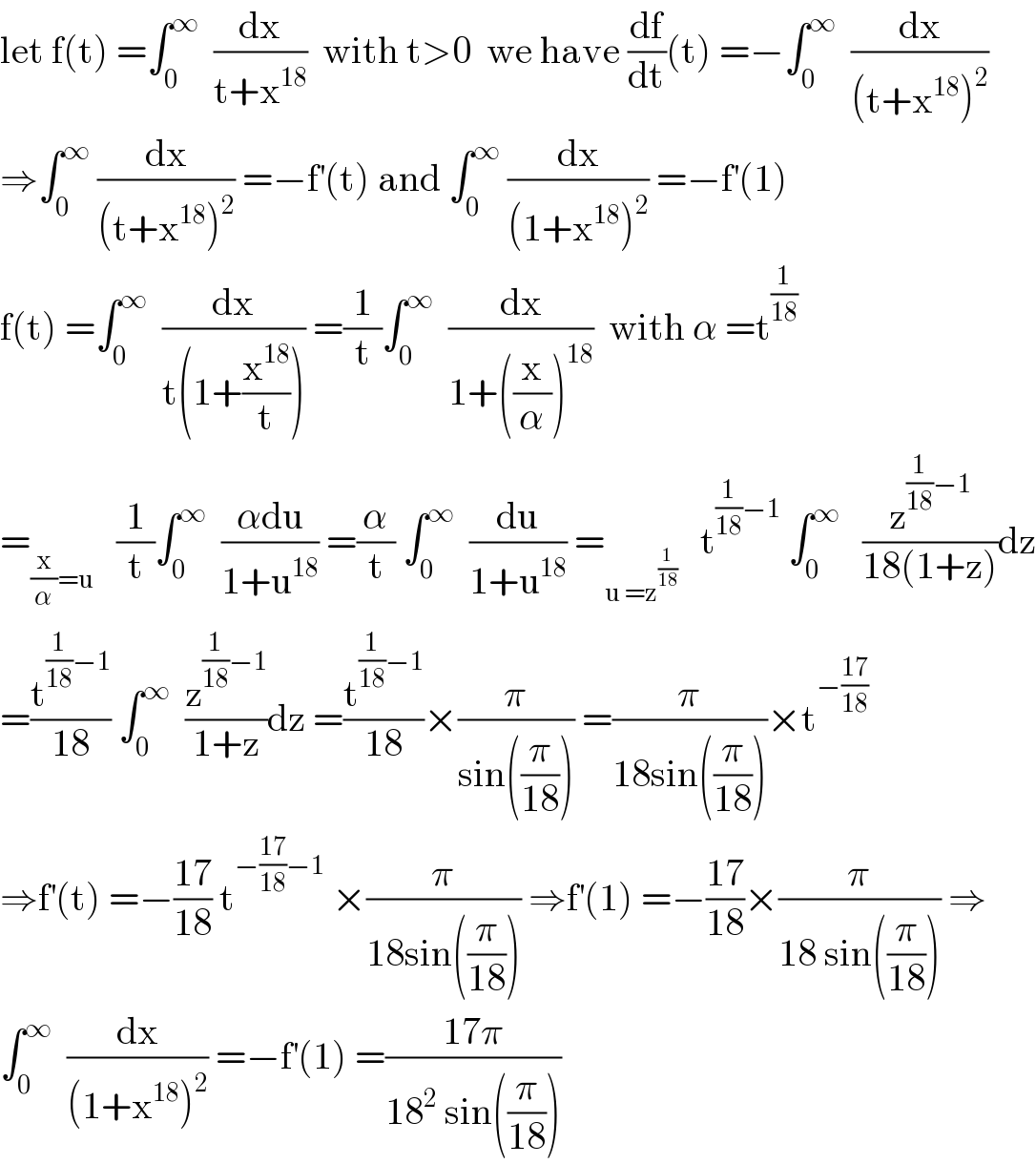
Question and Answers Forum
Question Number 100590 by Rohit@Thakur last updated on 27/Jun/20

Answered by mathmax by abdo last updated on 27/Jun/20

Commented by Ar Brandon last updated on 27/Jun/20
Understood, impressionnant ! ��
Commented by 1549442205 last updated on 27/Jun/20

Commented by Coronavirus last updated on 27/Jun/20
������������������������������������������������������������
Commented by abdomathmax last updated on 27/Jun/20

Commented by maths mind last updated on 27/Jun/20

Commented by 1549442205 last updated on 27/Jun/20

Commented by mathmax by abdo last updated on 27/Jun/20

Commented by mathmax by abdo last updated on 27/Jun/20

Commented by Rohit@Thakur last updated on 28/Jun/20

Answered by smridha last updated on 27/Jun/20

Commented by Rohit@Thakur last updated on 28/Jun/20

Commented by smridha last updated on 28/Jun/20
![∫_0 ^∞ (dx/((1+x^(18) )^2 )) let x^9 =tan(𝛉) so we get (1/9)∫_0 ^(𝛑/2) sec^(−4) (𝛉).tan^((1/9)−1) (𝛉)sec^2 (𝛉)d𝛉 =(1/9)∫_0 ^(𝛑/2) (((sin𝛉)^(−(8/9)) )/((cos𝛉)^(−(8/9)) )).cos^2 (𝛉)d𝛉 =(1/9)∫_0 ^(𝛑/2) (sin(𝛉))^(−(8/9)) (cos(𝛉))^((26)/9) =(1/9).(1/2).((𝚪(((−(8/9)+1)/2)).𝚪(((((26)/9)+1)/2)))/(𝚪(((−(8/9)+((26)/9)+2)/2))))=(1/(18))((𝚪((1/(18))).𝚪(((35)/(18))))/(𝚪(2))) =(1/(18))((𝚪((1/(18))).𝚪(((17)/(18))+1))/(1!))=((17)/(18^2 )).𝚪((1/(18))).Γ(((17)/(18))) [𝚪(n)=(n−1)! and 𝚪(n+1)=n𝚪(n)] =((17)/(324))𝚪((1/(18))).𝚪(1−(1/(18)))=((17𝛑)/(324)).(1/(sin((𝛑/(18))))) [𝚪(m).𝚪(1−m)=(𝛑/(sin(m𝛑))) where m<1 this is called reflection formula for Gamma f^n ]](Q100718.png)
Commented by smridha last updated on 28/Jun/20

